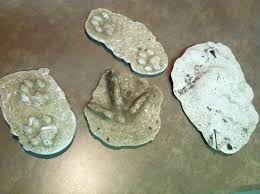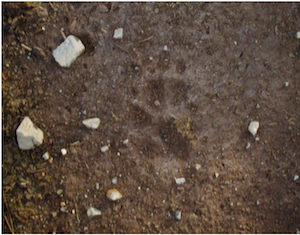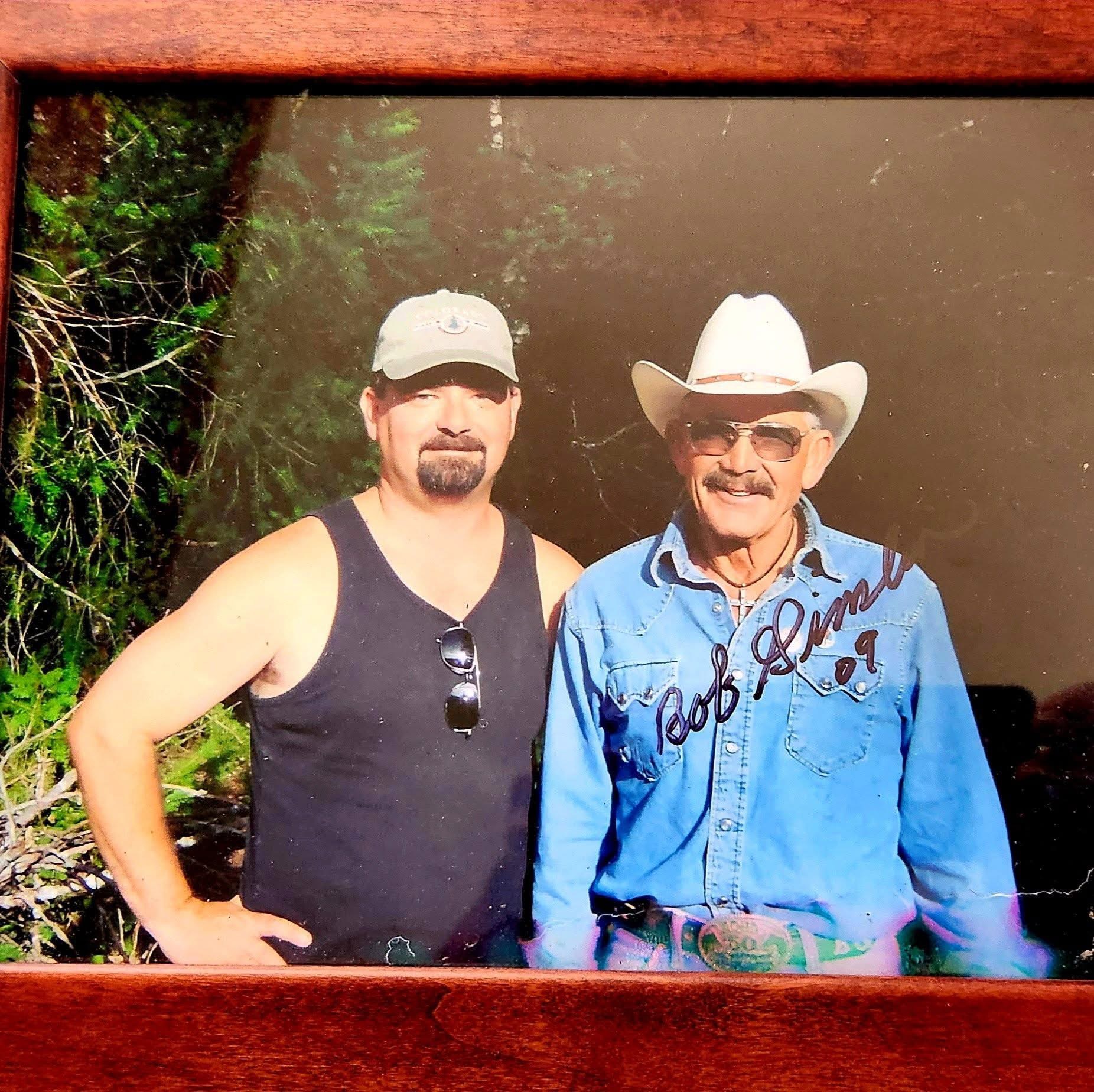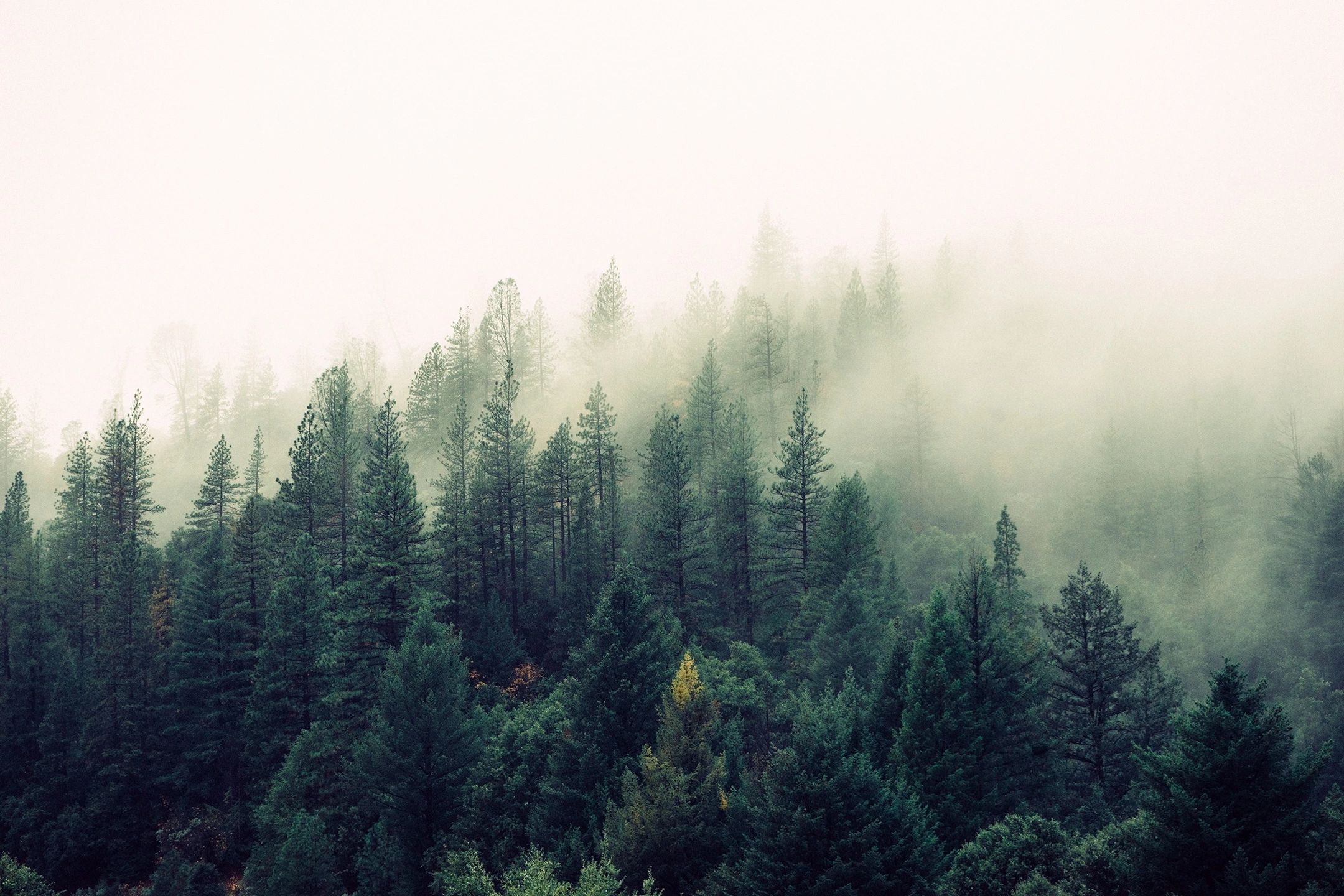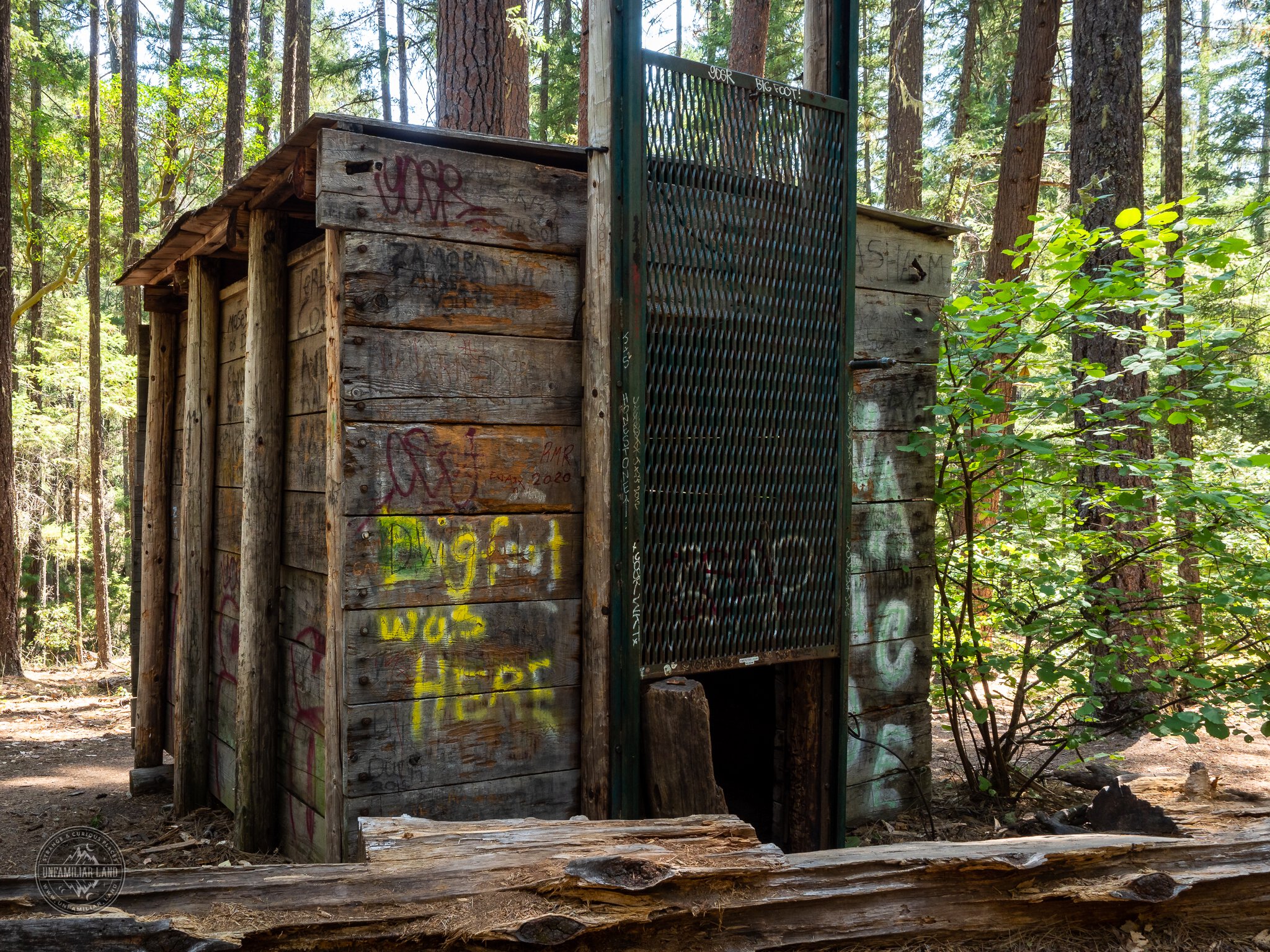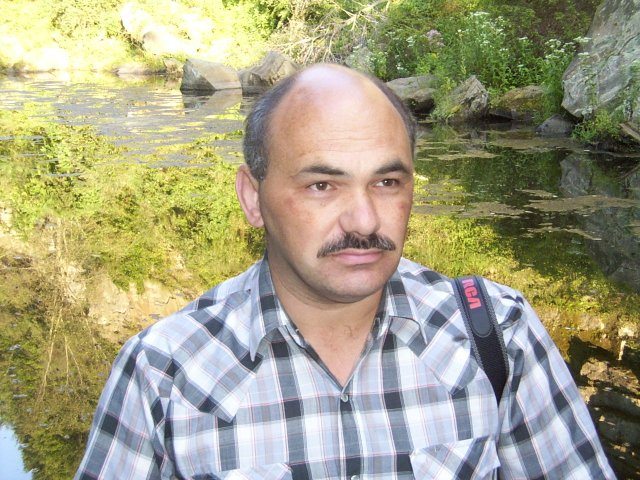You walk out your back door one day to find a layer of freshly fallen snow. Crisscrossing it are a myriad of tracks and trails of the animals that have passed though overnight. You wonder what kind of animals they were, and whether you can tell from their tracks. Some are big and some are small. Some have claws and some don’t. It’s fascinating to you that so many animals have walked though your yard, and you want to know more. How do you learn what made these tracks?

he skill of tracking human or animal track may include areas the terrain or by a splayed footprint that is both an art and a science. According to Dr. Louis Lienberg, tracking is the oldest science known to mankind. Our ancient primitive ancestors used tracking skills to hunt the animals they needed to survive. They developed the skills of a scientist: observations, classification and identification. They developed search images in their minds for the particular shapes of the tracks left by the animals they were interested in. They were able to follow those trails over varied terrain and in all kinds of weather conditions. Their very survival depended on it.
Now days, our survival may not depend on tracking skills, but that does not mean such a skill has no modern uses. Tracking is widely used in studying wildlife andmonitoring endangered species, as well as in search and rescue, military/ law enforcement, and hunting. There are also people who do it just as a hobby. Tracking is a skill that takes patience and dedication to learn. Anyone can learn to do it, and do it well. It’s all about training your mind to recognize the signs written there on the ground. The first thing to do is learn some of the vocabulary of tracking. As with any skill, tracking has its own lingo or words that identify the concepts that all trackers agree on. Here are the basics:
![]()
Are any clues left behind by the passage of a person or animal. This can include tracks, scat (droppings), scratch marks, nests, fur snags or any other disturbance to the landscape. Signs also include all the subtle clues that trackers rely on so much: bent grass blades, bruised or damaged vegetation, broken twigs, scuffs on fallen logs, impressions, overturned rocks, flattened areas of ground, patterns in dirt and plenty more. These signs, taken as a whole, are what make up each individual track. For example, one large human or animal track may include areas of flattened soil; some bruised and bent vegetation and an overturned rock or two.

Is the fecal droppings left by animals. These can be found anywhere and vary according to species. Trackers identify different species not only by the shape, size and quantity of the scat but also by its placement on the landscape. Most animals are very driven by scents. They use scents to mark their territories, find mates and communicate with others of their species. Thus, some animals deposit scat in prominent places to communicate territorial boundaries. Foxes and otters will often use rocks, logs or other objects to deposit their scat upon.
![]()
Are footprints, and these make up the bulk of the evidence for the passage of animals (or people). Perfect tracks that show every detail of the animal’s foot are rare, although you may find these in the ‘easy’ soils such as damp sand mud or silt. It is much more common to find a partial print of a toe or heel pad, or a distorted track caused by variations in the terrain or by a splayed footprint that looks much larger than it really is. Distortions are often due to the soil or terrain.

For example, if you walk over wet sand on a shore, the tracks you leave will look crisp, clear and about the right size. However, if you step off in too dry, lose sand, your tracks will not be clear.The sand will fall back into your track after you pick up your foot, leaving a mere rough outline of your foot. The sand that falls back in will leave the track looking much larger then it really is. For this reason, it is important to measure tracks constantly. The best method for doing this is James Halfpenny’s method called the minimum outline method. I will get into this later, but the point to remember is that tracks, even from the same foot on the same animal, will look different in various terrain and soil types.

Now that you know of the lingo of tracking, we’ll move on to some of the skills you need to learn. The first skill you will need to learn is the ability to identify tracks in the field. You can learn this by watching animals and then looking at the tracks they leave behind.You can even do this with a pet’s tracks or your own tracks. You can also get a field guide and take it with you out on the trail to identify any tracks you find. There are even free track guides on the Internet that you can print out and take with you.These are lightweight and easy to carry in a pocket. You identify animal tracks in a number of ways, such as by counting the number of toes, determining whether or not claw marks show, determining the shape of the heel pad and of the overall track, measuring the track, and more.
To begin learning tracking, you should set aside some time to practice in easy soils. The soils you consider easy will vary depending on your current tracking skill level. If you are just beginning, it’s OK to soil that is very sandy or silty. These fine graded soils are great for holding prints and make your first steps in learning this art easier. You will want to monitor yourself and then, once these soils become easy, move on to more difficult soil types. If you are a more experienced tracker, challenge yourself to move on to more difficult soil types, or to areas covered by dry grass, dry leaves or even hard, rocky soils. Push yourself to track in areas that are difficult for you. You will find your skill growing as you learn to work in these areas.

The idea is to learn what tracks look like first. Then use your knolledge and begin to learn to follow trails. Trailing is the art that brings tracking alive for most trackers. While most of us never trail an animal far enough to actually track it to its den or touch it, we can follow the trails and learn much about the lives of these creatures that share the environment with us.
To begin learning trailing, use your own tracks and follow them. Even though human feet are larger then most animal tracks, you will find that sign is the same, no matter the size of the Animal that created it. A tiny fox will crush leaves with its feet just as a bear would, although on a much smaller scale. After repeating this exercise a few times, you will notice that you see more signs on the landscape than you have ever seen before. You will be amazed at how much there is to see that indicates the passage of animals or humans.

Set aside some time to practice, and get a couple of friends together to practice with you. Make sure you choose people who have an interest in tracking. If they become bored or distracted, they will distract the whole group. It is better to practice alone than to have someone along who will distract you and take away from your learning. Tracking requires concentration and patience. In the beginning stages, you will have to motivate yourself to stick with the trail to the end. For that reason, stick to trailing short trails at first, maybe ten steps or so. Then take a break and congratulate yourself on completing a trail. It’s hard work, but the rewards are worth it in the end.
A good exercise to teach you trailing is to choose a tracking area, have a friend walk through it, and thenfollow their trail. Remember to start in soil that is easy for you. Don’t make it to difficult to begin with as this only leads to discouragement. You want to be successful and get the feeling of excitement that completing a trail can bring.
Have your friend make some nice clear tracks at the beginning of their trail. They can do this by leaving a ribbon there or by scuffing up the soil and leaving two perfect prints there. Then have them walk about ten to twenty steps into the tracking area and leave a ribbon or some other clue that signifies the end of the trail.Have them walk back out of the area being careful not to follow the trail that they just created. You can also layout the tracks yourself and follow them back if you do not want to practice with a friend or two. It’s all up to you and your style. It does help in the early stages of learning to have more then one tracker practicing together. This way, you get several sets of eyes searching for tracks and signs at different angles. By sharing what you each see, you can learn from each other.
You begin by starting at the perfect tracks your friend made. Each tracker should draw these tracks. It doesn’t matter if you are a good artist or not. Even just a few lines and squiggles that signify the patters you see in the shoeprint will help. This is your drawing, and the purpose of it is to help you solidify the details of the track in your mind. By drawing it, you are forced to pay attention to the details.

Next, begin to follow the trail. They key here is to move along step by step. DO NOT skip any tracks. The ones that are most difficult to see are the ones that teach you the most. Also, do not move beyond the point of the last identifiable track until you have found the next one. Each time you take a step, put your hand on the ground, or otherwise touch the area, you are leaving sign. We call this contamination because it gets in the way of seeing the tracks you are searching for and causes confusion. Even if you spend half an hour on your hands and knees looking for a single blade of bruised grass, you should take the time to be patient until you find it. This way, you train your brain to recognize signs. Having other trackers looking also helps. They can point out what they see, and you can give your input as well. You help each other learn in this way. The idea here is to go slowly and take your time. It’s not a race to get to the end of the trail. You want to learn as much as you can as you go along. This is why you want to make sure you have enough time set aside for practice and do not have to rush during your learning.
Search-and-rescue trackers train this way and eventually gain enough skill so that they can see tracks while walking. You may spend 20 hours or more on your hands and knees before you get to that point, but it’s not a race. Take your time and learn the basics. Give yourself a solid foundation to work from.You will be surprised at how good you become at it.

